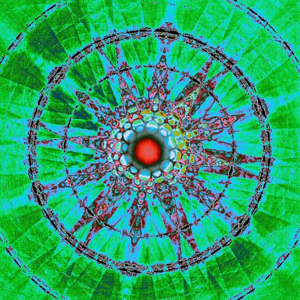What would you do?What would you do if someone presented you with convincing evidence that something catastrophic (1) was about to happen to the human race, and that unless your country spent billions of dollars on technologies to defeat said catastrophe, you and your way of life could literally become a thing of the past (e.g. everyone dies or is reduced to a state of universal extreme poverty)?
You have probably read about the possibility of a killer meteor strike between 2026 and 2028 (2). How much would you be willing to authorize your government to spend if we learned definitively that it was going to strike? If this or any other meteor or comet was on a collision course with Earth would you authorize $1 trillion to save the planet? $100 billion? $10 billion? (3). And consider that this is but one of many known civilization-ending events.
A different but no less frightening possibilityWhat would you do if someone presented you with convincing evidence that a technology that is being marginally funded today might present the same catastrophic potential as one of the well known civilization-ending events?
What would you do if someone presented you with convincing evidence that a technology that is being marginally funded today may yield the greatest gifts that humankind has ever received?
What if you learned that they were one in the same…
Molecular Manufacturing (MM) has the potential to be either; destroyer or savior. Many learned, credible and respected people honestly believe that MM is one of if not
the most important things humanity should be focused on, immediately, if not sooner. They base their belief on hundreds of years of collective research and collaboration into one or more areas pertaining to MM. And the best they can say at this moment is “We don’t know when MM will happen. There are, however, several paths leading to it, and we’re pretty sure that one will succeed, and within the next couple decades. We’re also not sure of it’s impact, but we believe that either extreme is possible. We also believe that one of the more favorable futures could happen if we start discussing MM, now. With input from a much larger group of stake holders (RR note:
that’s you and I and all of us folks) a few core groups should be able to find a good path, provided modest funding.”
With $10 billion you could fund an aggressive MM R&D program; a program that helps us learn more about how we can steer clear of the
dangers, and that helps us realize the
grand vision. And, possibly, one that in a few short years answers the most fundamental question "what needs to be done to help us realize one of the best futures?"
So now we come to the point of this post, the tip of the nanotube if you will, and the Question: “If any one of many potential civilization-ending events was in the works or about to happen, and if you would authorize the spending of billions of dollars to spare us from it, why not at the very least give these learned, credible and respected folks an honest listen regarding MM? If they’re right, then we have to consider spending those dollars, and the sooner the better. So ask them questions of your own, right here.
Assert your stake holder obligations and participate!
And yes, listen to their critics, especially those that engage in honest debate.
Learn more about MM at:
The Center for Responsible NanotechnologyThe Foresight Nanotech InstitutePreparing for NanotechnologyFull disclosure: I happen to believe that should the well-defined stepping-stone technologies receive enough funding, molecular manufacturing is in our near future (5 to 25 years). I also believe that without extensive preparation and planning, things could go horribly wrong.
When might MM happen? Who knows. I wouldn’t be surprised if by 2012—especially given the possibility of existing unknown programs—and I would be surprised if not by 2030. We are an ever-inquisitive bunch of caffeine injected monkeys, sticking our tool wielding hands into and prying open the secrets of the universe with mad abandon; sometimes succeeding beyond our wildest imaginings, and sometime… not. I’d be very surprised if we didn’t crack this nut, soon.
I also happen to believe that we’ll choose one of the paths that leads us to universal abundance, where no one is lacking for their basic needs. Those needs include adequate food, safe water, a clean environment, housing, medical care, education, public safety, fair labor, unrestricted travel, artistic expression and freedom from fear, tyranny and oppression. I also believe that MM will enable humankind to realize it’s dream of traveling to the stars, and will allow for a world where we work only to follow our passions, while enabling us to live longer, healthier, and more productive lives.
(1) Meteor or comet strike, Yellowstone magma pool erupts, the once in a thousand-year tsunami, monster earthquake, etc. “These are risks that would imperil humankind as a whole and/or have major adverse consequences for the course of human civilization.” From Wikipedia, the free encyclopedia.
link(2) “The risk of an impact by asteroid 2004 MN4 went up slightly on Saturday, Dec. 25. It is now pegged at having a 1-in-45 chance of striking the planet on April 13, 2029. That's up from 1-in-63 late on Dec. 24, and 1-in-300 early on Dec. 24. Astronomers still stress that it is very likely the risk will be reduced to zero with further observations. And even as it stands with present knowledge, the chances are 97.8 percent the rock will miss Earth.” Source:
Space.comSee also
link. An example of what might happen if we got hit by a meteor the size of the moon. (RR note: I included this one because it is an interesting video)
(3) As of 2000, there were at least 7 countries with a GNP of $1 trillion or more, and 6 more at $500 million or more. So it is very likely that a $1 trillion investment would be authorized to prevent a civilization-ending event.





 I’d take a very different approach to the question. I think it safe to assume that more people still rely on the plow than the microprocessor as a means to individual sustenance, if for no other reason than that most people who work with plows know how to fix’em, and I don’t think I know more than a handful of people who wouldn’t ask for a cattle prod when I asked them to reseat RAM. I perceive the gap between molecular manufacturing and the microprocessor to be on par with the plow/processor gap, which is to say that what underlies the gap is so fundamentally different from the technology people are familiar with/oblivious to that words (well, my words) offer little insight into just what’s ahead. In America’s case, we’ve seen that negative campaigns work wonders for capturing the public’s attention. How fortunate are we for that? Therefore, I’d address the public not as a scientist trying to wax mechanosynthetic on molecular manufacturing, but as a molecular manufacturing enthusiast (and I’ve NO DOUBT that we’re all headed in the direction of absolute atomic control and precision in our manufacturing processes because, quite simply, it makes absolutely no scientific sense to stop at some size regime en route to such control) taking a good long look at the state of the world and wondering just how odd what we do now is going to look in a century (if we all make it that long).
I’d take a very different approach to the question. I think it safe to assume that more people still rely on the plow than the microprocessor as a means to individual sustenance, if for no other reason than that most people who work with plows know how to fix’em, and I don’t think I know more than a handful of people who wouldn’t ask for a cattle prod when I asked them to reseat RAM. I perceive the gap between molecular manufacturing and the microprocessor to be on par with the plow/processor gap, which is to say that what underlies the gap is so fundamentally different from the technology people are familiar with/oblivious to that words (well, my words) offer little insight into just what’s ahead. In America’s case, we’ve seen that negative campaigns work wonders for capturing the public’s attention. How fortunate are we for that? Therefore, I’d address the public not as a scientist trying to wax mechanosynthetic on molecular manufacturing, but as a molecular manufacturing enthusiast (and I’ve NO DOUBT that we’re all headed in the direction of absolute atomic control and precision in our manufacturing processes because, quite simply, it makes absolutely no scientific sense to stop at some size regime en route to such control) taking a good long look at the state of the world and wondering just how odd what we do now is going to look in a century (if we all make it that long). Important discoveries and radical breakthroughs are happening now with molecular manufacturing. For instance, a fairly advanced form of DNA nanotechnology is being created (DNA origami, Ned Seemans Work).
Important discoveries and radical breakthroughs are happening now with molecular manufacturing. For instance, a fairly advanced form of DNA nanotechnology is being created (DNA origami, Ned Seemans Work). Future generations of nanotechnology will use advanced nanoscale machinery to construct powerful products with molecular precision. Molecular construction will lead to advanced capacities, such as tabletop fully-automated factories capable of constructing duplicate factories in less than a day. The economic, security, military, and environmental implications of molecular manufacturing will be extreme. Vicious cycles in any of these areas could spiral quickly out of control unless the problem has been studied and understood in advance. Extreme or hasty responses to developing problems could easily make things worse.
Future generations of nanotechnology will use advanced nanoscale machinery to construct powerful products with molecular precision. Molecular construction will lead to advanced capacities, such as tabletop fully-automated factories capable of constructing duplicate factories in less than a day. The economic, security, military, and environmental implications of molecular manufacturing will be extreme. Vicious cycles in any of these areas could spiral quickly out of control unless the problem has been studied and understood in advance. Extreme or hasty responses to developing problems could easily make things worse. Nanoscale materials will be the building blocks of the 21st century, but you'd have to be crazy to start a nanomaterials company. Why? Well Michael Dell didn't need to make microprocessors to build a computer business, and the key to adding value is always in the application, not the material, the silicon, not the sand.
Nanoscale materials will be the building blocks of the 21st century, but you'd have to be crazy to start a nanomaterials company. Why? Well Michael Dell didn't need to make microprocessors to build a computer business, and the key to adding value is always in the application, not the material, the silicon, not the sand. Nanoscale materials have the potential to solve the world's energy, pollution, and water problems - at least for this century - and possibly the world's food problems and taking a big bite out of global warming.
Nanoscale materials have the potential to solve the world's energy, pollution, and water problems - at least for this century - and possibly the world's food problems and taking a big bite out of global warming. What people want most from nanotechnology are dramatic medical, environmental, and energy advances. Today's nanomaterials are starting to make an impact, but for truly revolutionary breakthroughs, we should push for the development of programmable, atomically-precise manufacturing. The
What people want most from nanotechnology are dramatic medical, environmental, and energy advances. Today's nanomaterials are starting to make an impact, but for truly revolutionary breakthroughs, we should push for the development of programmable, atomically-precise manufacturing. The  Molecular manufacturing has advanced greatly during the last year, both in its technology base and its acceptance as a research objective. DNA engineering techniques can now be used routinely to build 100 nm scale, atomically precise objects with a million atoms, providing a way to organize more complex systems than before. Protein engineering and molecular machine work continues to advance. A
Molecular manufacturing has advanced greatly during the last year, both in its technology base and its acceptance as a research objective. DNA engineering techniques can now be used routinely to build 100 nm scale, atomically precise objects with a million atoms, providing a way to organize more complex systems than before. Protein engineering and molecular machine work continues to advance. A  It takes a lack of imagination to think that molecular manufacturing (MM) will never become a reality. We are already doing similar work - creating things from the bottom up - with 3-D printers, for instance, so MM is just a logical extension of that idea and nothing so radically new that there should be so much skepticism surrounding it. Further, history has shown that humans are ingenious enough to overcome perceived and technical limitations as daunting as they may seem at the moment - creating things that were thought to be impossible, from flying machines to personal computers to most recently the "invisibility cloak." So it's not so much a question of if MM will happen but when...and this is very difficult timeline to predict.
It takes a lack of imagination to think that molecular manufacturing (MM) will never become a reality. We are already doing similar work - creating things from the bottom up - with 3-D printers, for instance, so MM is just a logical extension of that idea and nothing so radically new that there should be so much skepticism surrounding it. Further, history has shown that humans are ingenious enough to overcome perceived and technical limitations as daunting as they may seem at the moment - creating things that were thought to be impossible, from flying machines to personal computers to most recently the "invisibility cloak." So it's not so much a question of if MM will happen but when...and this is very difficult timeline to predict.





